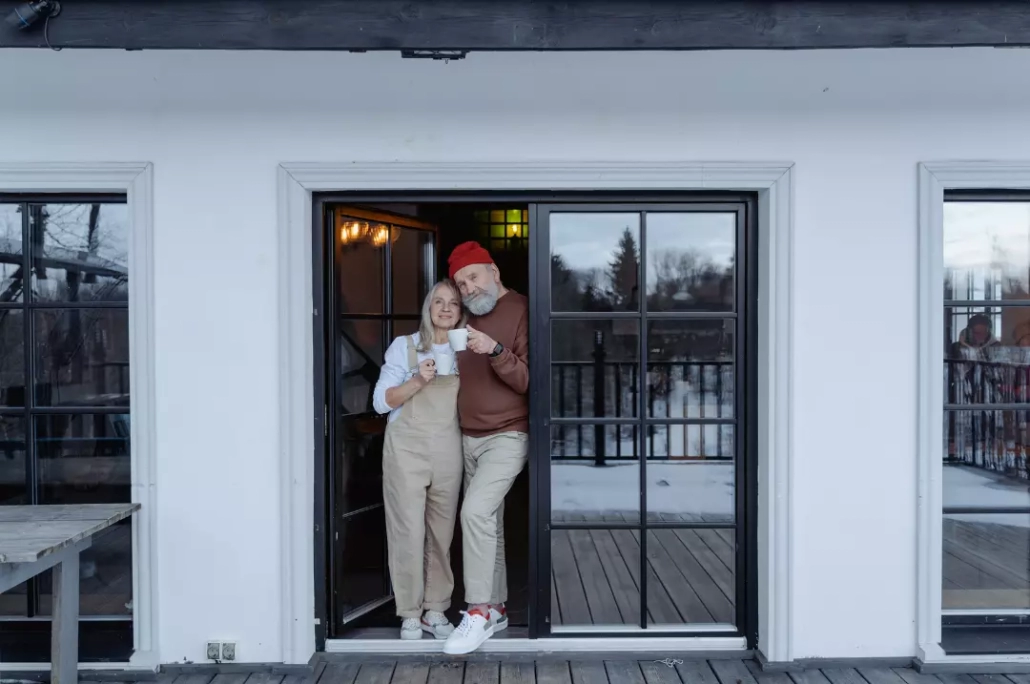Granny flat interest for aged care
Table of Contents
ToggleWhen it comes to planning for aged care and ensuring financial security for our later years, there’s a unique concept that deserves our attention: granny flat interest. This intriguing arrangement has gained significance in recent years as families seek ways to provide companionship, support, and a secure living environment for their elderly members.
In this blog post, we’ll delve into the world of granny flat interest, unravelling its definition, benefits, and implications for both occupants and property owners. Whether you’re an ageing individual considering your housing options or a family member looking to offer a helping hand, understanding granny flat interest can play a pivotal role in making informed and strategic decisions. Let’s embark on this journey to grasp the nuances of this distinctive living arrangement and how it can shape your aged care financial planning.
What is granny flat interest?
Granny flat interest might sound a bit puzzling at first, but it’s actually a simple yet significant concept in the realm of housing and aged care planning.
Imagine a scenario where an older individual wants to live in a specific home for the rest of their life, but the home is owned by someone else. Granny flat interest is the arrangement that makes this possible.
Unlike a typical property ownership where you own the house and the land it sits on, granny flat interest is all about the right to live in a particular home, even though you don’t own it yourself. This means you get to call that house your home, enjoy its comforts, and have the security of knowing you have a place to live for the rest of your life.
Here’s what you need to know about granny flat interest in a nutshell:
- Lifelong living: Granny flat interest allows you to live in a home for the rest of your life, even if it’s owned by someone else.
- Not about property type: It’s important to note that granny flat interest is not about the type of property – it’s about the living arrangement itself.
- Eligibility: To have a granny flat interest, the home must be your main residence and not owned by you, your partner, or any entities you control.
- Lifetime validity: The right to live in the home is valid only during your lifetime. It doesn’t become a part of your estate or inheritance for your heirs after you pass away.
So, in essence, granny flat interest offers a way for ageing individuals to have a comfortable and secure home, even if they don’t own the property. It’s a unique arrangement that brings together the aspects of housing, family, and financial planning to create a harmonious living solution.
Exploring eligible properties
When we think of “granny flats,” we might picture small, separate cottages in the backyard. However, the world of granny flat interests goes beyond just these quaint dwellings. Let’s explore the different types of properties that can be eligible for this arrangement.
Diverse property types
Granny flat interests can be associated with a variety of property types, extending beyond the traditional notion of a standalone granny flat. It’s not solely about the physical structure but more about the living arrangement itself.
Family arrangements
These interests often come into play within families, especially when older individuals desire companionship and support. It’s a way for family members to ensure their loved ones have a comfortable and secure living situation, often nearby.
Same or separate buildings
Granny flat interests can be established either in the same building as the property owner’s home or in a separate building on someone else’s land. This means that the arrangement can be tailored to the specific needs and preferences of the individuals involved.
Not for properties you own
Importantly, you cannot set up a granny flat interest in a property you already legally own. The essence of the arrangement lies in giving you the right to live in a home you don’t own.
Broader benefits
Exploring the possibilities of eligible properties highlights the potential for fostering strong family connections and offering assistance to older family members in a structured and meaningful way. Whether it’s sharing a backyard, living adjacent to loved ones, or creating a sense of community within a family property, granny flat interests open up a range of housing possibilities beyond the conventional.
Establishing granny flat interests
Now that we have a clearer understanding of what granny flat interest is and the types of properties it can be associated with, let’s delve into the process of actually setting up this unique living arrangement.
Seeking expert advice
Before proceeding, it’s highly recommended to seek financial and legal advice. These experts can guide you through the complexities and ensure that the arrangement aligns with your goals and circumstances.
Exchanging assets for the right
The essence of a granny flat interest involves exchanging assets or money for the right to live in another person’s property for life. This exchange can take different forms, depending on what works best for both parties involved. Two common examples of exchange include Transferring ownership with lifelong living right and Exchanging assets for living right.
Transferring ownership with lifelong living right
You might transfer ownership of your own home to someone else while retaining the right to live in it for the rest of your life. This ensures you have a secure home and also allows the property owner to have the property after your lifetime.
Exchanging assets for living right
Alternatively, you might exchange assets, such as money or property, for the right to live in a particular property. This ensures you have a home without directly owning it.
Types of granny flat interests
There are two main types of granny flat interests: life tenancy and life interest. In both cases, your right to live in the property is based on your residency there. This means you actually need to live in the property to maintain your rights.
Life Tenancy
This gives you the right to live in the property itself. You occupy the space, enjoy its amenities, and call it your home.
Life Interest
This grants you the right to use and benefit from the property. While you might not physically reside there, you can use the property or derive income from it, based on the terms of the arrangement.
It’s crucial to understand that both types of granny flat interests hinge on your residency. If you don’t actually live in the property, your rights might be affected.

Documentation and legalities
When it comes to something as significant as granny flat interest, it’s wise to have things down in writing to ensure clarity, protection, and peace of mind for all parties involved. Let’s explore the importance of documentation and the legal aspects of this arrangement.
Documenting the agreement
While verbal agreements might be accepted in some cases, having a formal legal document is highly recommended. This document serves as proof of the arrangement and helps prevent misunderstandings or disputes in the future.
Key Components of the Document:
Living rights
The document should explicitly outline your right to live in the property for the rest of your life. This ensures that your housing security is safeguarded.
Rent and property upkeep
Address any agreements about rent payments or property maintenance responsibilities. This keeps expectations clear and avoids confusion.
Termination compensation
Include terms about what happens if the property owner decides to terminate the granny flat interest. This could involve compensation or alternative arrangements.
Legal review
Have the document reviewed by legal experts to ensure that it adheres to the relevant laws and regulations.
Open discussion
Before finalising the document, have open and honest discussions with the property owner. Clarify any uncertainties, raise questions, and ensure that both parties are on the same page.
Potential impact on payments
It’s important to discuss and understand the potential impact of the granny flat interest on government benefits, pension payments, taxes, and other financial aspects. Seeking advice from financial advisors can help you make well-informed decisions.
Protection for all parties
Documenting the arrangement provides protection for both you and the property owner. It ensures that everyone’s rights and responsibilities are clearly defined, minimising the risk of conflicts down the road.
Advantages and considerations
Now that we’ve explored the nuts and bolts of granny flat interest, let’s take a closer look at the advantages it offers and some important considerations for both occupants and property owners.
Advantages for occupants
Housing security
Granny flat interest provides a stable and secure living arrangement for the rest of your life, ensuring you always have a place to call home.
Companionship
If established within a family arrangement, it can foster strong bonds and companionship by allowing you to live close to your loved ones.
Financial relief
By exchanging assets for living rights, you might experience financial relief, especially if you’re no longer burdened by property ownership expenses.
Community connection
Living in proximity to family members can provide a sense of belonging and community, which can be particularly beneficial in older age.
Advantages for property owners
Assistance and care
Property owners can provide support and caregiving to the occupants, enhancing the quality of life for their loved ones.
Financial planning
Granny flat interest arrangements can be a strategic way for property owners to plan their finances, potentially generating income while ensuring care for family members.
Legacy continuation
It allows property owners to keep family homes within the family, ensuring their legacy lives on.
Considerations for all parties
Long-term commitment
Establishing a granny flat interest is a long-term commitment. Both occupants and property owners should carefully consider the implications.
Financial implications
The arrangement can have financial implications on government benefits, taxes, and pension payments. Seeking financial advice is crucial.
Legal expertise
To ensure a fair and legally sound arrangement, consulting legal professionals is essential.
Communication
Open communication between occupants and property owners is key to addressing concerns and expectations.
Maintenance and upkeep
Both parties need to discuss responsibilities for property maintenance, repairs, and ongoing costs.
Future changes
Be prepared for potential changes in circumstances, such as health needs, mobility, or family dynamics.
Exit strategy
Consider what happens if the arrangement needs to be terminated due to unforeseen events. Having a plan in place ensures a smoother transition.

Financial and tax implications
As with any significant financial decision, it’s important to consider the potential financial and tax implications of a granny flat interest arrangement. Let’s take a closer look at what you need to know in this regard.
Financial considerations
Government benefits
The arrangement might impact government benefits you’re receiving, such as pensions or healthcare subsidies. Consulting with a financial advisor can help you understand how the arrangement could affect your benefits.
Estate planning
Since the property doesn’t become part of your estate after your passing, you need to plan accordingly for the distribution of your assets to your beneficiaries.
Property ownership costs
While you won’t own the property, you might need to contribute to maintenance and other costs as outlined in the agreement.
Tax implications
Capital Gains Tax (CGT)
If the property owner is not a family member and the arrangement involves exchanging assets for the living right, there could be CGT implications. Seeking advice from a tax professional is crucial.
Income Tax
In some cases, the arrangement might lead to income tax considerations. This is especially relevant if the property owner receives regular payments from you.
Stamp Duty
Depending on the specifics of the arrangement and the jurisdiction, stamp duty might apply to property transfers.
Professional guidance
Given the intricate financial and tax aspects, it’s highly recommended to consult both financial advisors and tax experts. They can provide personalised guidance based on your unique situation and help you navigate potential pitfalls.
Transparency
Ensure that all financial aspects are transparently discussed and outlined in the formal agreement to prevent misunderstandings in the future.
Ongoing monitoring
As financial and tax regulations can change, it’s important to periodically review your arrangement to ensure it remains compliant with the latest laws.
Case Studies
To bring the concept of granny flat interest to life, let’s explore a couple of real-life examples that showcase how this arrangement can work in practice.
Example 1: Lifelong family support
Imagine Jane, an elderly widow who wants to live near her daughter Lisa and her family. Lisa owns a property with a spacious backyard. They decide to establish a granny flat interest arrangement. Jane contributes a portion of her savings to cover property maintenance and other costs. In return, she gains the right to live in a separate structure in Lisa’s backyard for the rest of her life. This arrangement provides Jane with companionship, support, and a secure home, while Lisa benefits from being able to care for her mother and enjoy her company.
Example 2: Financial planning for the future
John and Sarah, a retired couple, want to downsize and ensure their financial security in retirement. They own a larger property and decide to transfer ownership to their son, Mark, while retaining a granny flat interest. This way, John and Sarah receive a lump sum from Mark, which they can use to fund their retirement. In return, they maintain the right to live in their current home for life. This arrangement allows them to downsize, release equity, and secure their housing needs while providing Mark with the property in the future.
Key takeaways from case studies
- Granny flat interest arrangements can be tailored to specific family dynamics and financial goals.
- The arrangement often involves a combination of housing security, financial planning, and family support.
- Both parties benefit from the arrangement, whether through companionship, caregiving, or financial relief.
Frequently Asked Questions
As we’ve explored the ins and outs of granny flat interest, it’s natural to have questions. Here are answers to some common queries that might be on your mind:
No, granny flat interest is about having the right to live in a specific home for life, even if you don’t own it. It’s a living arrangement rather than property ownership.
No, granny flat interest involves living in a property you don’t own. You can’t set up this arrangement for a property you already legally possess.
Yes, it’s possible. Granny flat interest might affect your eligibility for certain government benefits or pensions. Consult a financial advisor to understand how it could impact your specific situation.
Yes, you can leave the property if your circumstances change. However, the terms of the arrangement might dictate compensation or other conditions. Always review the agreement and consult legal experts if needed.
No, the right to live in the property typically ends upon your passing and doesn’t become part of your estate.
Granny flat interest can have implications on capital gains tax, income tax, and other financial aspects. It’s crucial to seek advice from financial advisors and tax experts.
Proper documentation and legal guidance are essential. The agreement should outline living rights, responsibilities, and potential termination conditions.
While some verbal agreements might be valid, having a formal legal document is strongly recommended. It provides clarity and protection for all parties involved.
Yes, it’s possible to establish a granny flat interest with a friend or non-family member. However, be aware of potential financial and tax implications.
Consult financial advisors and legal experts who specialise in aged care planning and property law. They can provide personalised guidance based on your situation.

In the realm of aged care financial planning, granny flat interest stands as a remarkable option that bridges generations and priorities. By harnessing the power of informed decisions and expert guidance, you can pave the way for a future that’s secure, supportive, and fulfilling.









